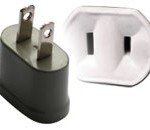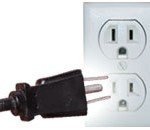The 9/11 Memorial & Museum lay in the footprint of the twin towers of the World Trade Center that was attacked by terrorists deliberately flying aircraft into these buildings on September 11, 2001. Two additional aircraft were hijacked, one crashing into the Pentagon and the second brought down in a field by the brave efforts of the passengers on board. In total, nearly 3000 people lost their lives. The memorial and museum provide a place to contemplate and document what happened on that tragic day in 2001.
Idaho: Craters of the Moon National Monument
On our return from a road trip from Minnesota back to our home in Central Oregon, we trekked through eastern Idaho. One of the places that had popped up on our itinerary was Craters of the Moon National Monument which is located between Idaho Falls and the State capital Boise. Living in Central Oregon we have plenty of examples of volcanic activity including cinder buttes, lava fields and lava tube caves but we decided to check these Craters of the Moon – can you ever too much of lava fields!
Out in this part of the world things are very exposed to the elements, so visiting in July as we did you can expect some pretty hot temperatures. We timed our arrival to be earlier in the day to avoid exposure to the hot afternoon sun, but it was still toasty, to say the least.

Craters of the Moon is a vast ocean of lava flows with scattered islands of cinder cones and sagebrush. The Monument was established on May 2, 1924. In November 2000, a presidential proclamation by President Clinton greatly expanded the Monument area. The 410,000-acre National Park Service portions of the expanded Monument were designated as Craters of the Moon National Preserve in August 2002. The Monument and Preserve encompass three major lava fields and about 400 square miles of sagebrush steppe grasslands to cover a total area of 1,117 square miles. The Monument alone covers 343,000 acres.
The 60 distinct solidified lava flows that form the Craters of the Moon Lava Field range in age from 15,000 to just 2,000 years.
We rolled into the parking lot outside the visitors centre, which was a bit of a ghost town. This is a remote area so even in a good year I suspect that there is little passing traffic, in the year of a pandemic things were quieter than a church mouse. The visitor centre was in lockdown, just a handful of visitors allowed in at a time. We decided to settle for talking to the rangers stationed outside – you have to feel sorry for these poor people who normally got to sit inside a nice airconditioned building instead of being outside under a pop-up canopy in the blazing heat. Anyway, they were cheerful and helpful and we did a quick flash of our lifelong National Parks pass and were our way.
Our journey through the park did not need a lot of planning. The caves were off-limits due to the Covid-19 pandemic so we had to settle for a drive around the Park – which basically has a loop road with stops along the way where you can take a hiking trail (see map below). So off we set!
We stopped off a few places to take some photos. At Inferno Cone, a cinder cone devoid of much life, we decided to stretch our legs and climb to its peak at 6181ft. Luckily, we live at altitude but we are not as young and fit as we once were and the steep slope ahead looked daunting but we put our best step forward. By the time we reached the top, we were huffing and puffing but the views were stunning and it made the effort worthwhile.
It was very exposed atop of Inferno Cone, so after taking some photos of the panoramas of the lava fields we beat a descent back to our car and got the air-conditioning running at full blast.
We completed our journey around the loop and headed back on road.
If you have not seen much in the way of lava fields and are interested in geology then Craters of the Moon is a worthwhile stop if you are heading across Idaho!







In summary
- You see the beauty in desert landscapes
- Have not experienced lava fields or volcanic formations
- Are passing through north-central Idaho
Planning your visit
Craters of the Moon’s visitor centre is located 18 miles southwest of Arco, Idaho on U.S. Highway 20/26/93. It is 24 miles northeast of Carey, Idaho on U.S. Highway 20/26/93. The physical address is 1266 Craters Loop Road.


Best time to visit Craters of the Moon
With sparse crowds, nice temperatures and abundant birds and wildflowers, spring is a great time to visit Craters of the Moon National Monument and Preserve. The loop road is open early this year, and late May through mid-June is the peak of wildflower season at Craters of the Moon.


Where to stay
There is a basic campsite inside the Park, with 42 sites. You can squeeze RVs into some of the spaces but there are no hook-ups.
Beyond, the campsite the only other places are in the small towns of Arco or Carney. You can do what we did and plan your trip here as part of a journey through Idaho.
44.5902098-104.7146168
Related
More to Explore

In July 1848 a group of 300 people gathered in the city of Seneca Falls, New York for a convention on women's rights. At the end of this convention 100 people; 68 women and 32 men signed the Declaration of Sentiments which laid out how society, in particular men, subjugated women and what the reformists would like to see change. Unfortunately, it took another 70 years for American women to get suffrage with the ratification of the 19th Amendment in 2020.




